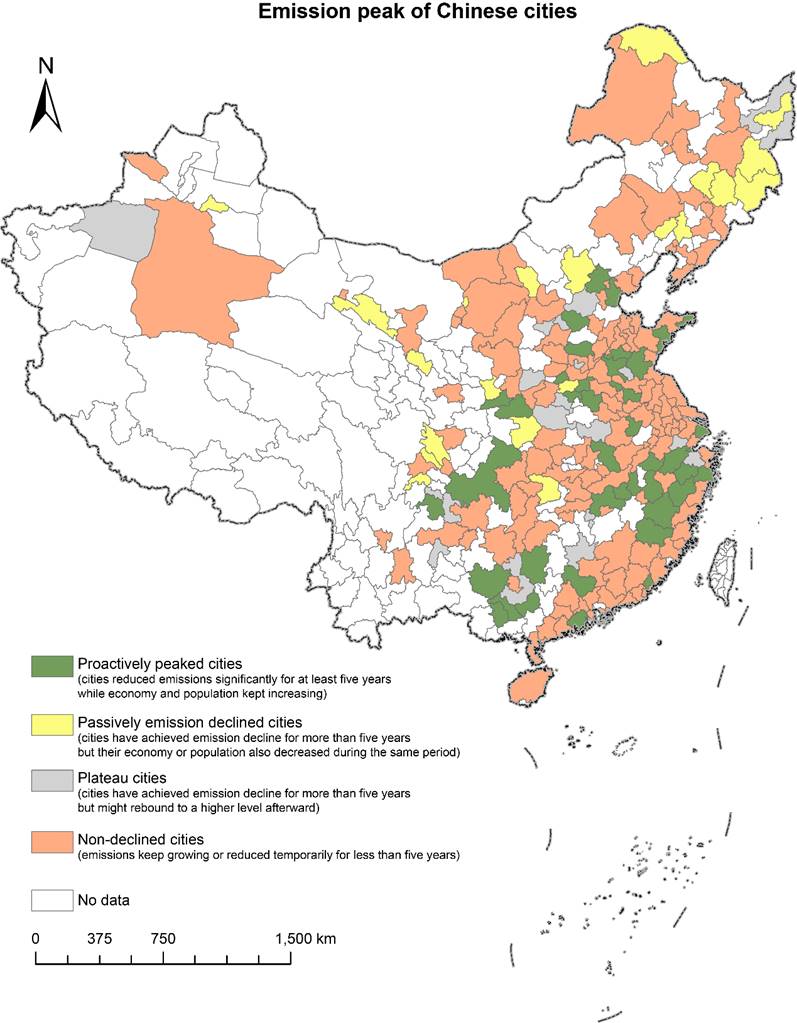China is playing an increasing role in global climate change mitigation, and city-specific information on the emissions trends and patterns can provide scientific support for China's realization of the goal of carbon peaking and the implementation of the path of low-carbon transformation when designing low-carbon policies. the Carbon Emission Accounts and Datasets for Emerging Economies (CEADs) spearheaded by Prof. Guan Dabo of the Department of Earth System Science (DESS), Tsinghua University provides the most comprehensive CO2 emission inventories of 287 Chinese cities from 2001 to 2019. The emission inventories are compiled for 47 economic sectors and include energy-related emissions for 17 types of fossil fuels and process-related emissions from cement production, covering over 98% of the Chinese population, above 99% of the GDP and above 97% of the CO2 emissions. The CO2 emission accounting approach is adopted, capturing all direct emissions from human economic activities within the territory of a city. The emission factors of fossil fuels are collected based on an extensive survey of over 4,000 state-owned Chinese coal mines in China. Compared to previous studies, the accuracy of the inventory has been further upgraded. The results have been published as a paper titled "City-level emission peak and drivers in China" in Science Bulletin.
The research shows significant differences among the 287 prefecture-level and above cities in China in energy and economic structure, emission patterns and peaking state of carbon emissions. Based on the multi-condition function, Mann-Kendall (MK) trend test, and the decoupling relationship between carbon emissions and social development indicators (economic development level and population size), the research team identifies the emission peak states in China. The results (as shown in the figure) The results show that 38 cities of the prefecture-level and above have proactively peaked their emissions (cities showing a significant decline of emissions for over five consecutive years, with stable growth in economy/population are called proactively peaked cities), another 21 cities also have emission decline, but passively (cities with continuous decline in emissions, but not decoupled from economic/population development are called passively emission declined cities), 20 cities of prefecture-level or above are at the stage of emission plateau (cities in which carbon emissions have been declining for five years but have a trend of rebounding are called plateau stage cities), and 139 cities of prefecture-level or above have not peaked (cities in which emissions keep increasing or have declined for a short period are called cities not realizing carbon peaking). According to the results of driver analysis, the 38 proactively peaked cities achieved emission decline mainly by efficiency improvements and structural changes in energy use, while the 21 passively emission declined cities reduced emissions at the cost of economic recession or population loss.
The research concludes that instead of using a one-size-fts-all approach, the emission targets of cities need to be set individually considering cities’ resource endowment, industrialization level, socioeconomic characteristics, and development goals. Those passively emission declined cities need to face up to the reasons that caused the emission to decline, and fully exploit the opportunities provided by industrial innovation and green investment brought by low-carbon targets to achieve economic recovery and carbon mitigation goals. Proactively peaked cities need to seek strategies to maintain the downward trend in emissions and avoid an emission rebound and thus provide successful models for cities with still growing emissions to achieve an emission peak. This research can provide support for the realization of carbon emission peaking goal and the implementation of low-carbon transformation path of different types of cities.
A/Prof. Shan Yuli from the University of Birmingham of the CEADs research team is the first author of the paper, and Prof. Guan Dabo of the DESS, Tsinghua University is the corresponding author of the paper.

Emission peak of cities of prefectural level and above
The latest carbon emission inventories of cities of prefectural level and above have been uploaded to CEADs–Carbon Emission Accounts and Datasets for emerging economies (https://ceads.net/data/city/) for free download, which can be used for the purpose of scientific research, policy making and other non-commercial uses. Please cite this paper and other related papers when using the data. For details, please consult the CEADs team: Shan Yuli, shanyuli@outlook.com; and Guan Dabo, guandabo@hotmail.com
• Shan et al. City-level emission peak and drivers in China (2022) Science Bulletin.
• Shan et al. City-level climate change mitigation in China (2018) Science Advances
• Shan et al. Methodology and applications of city level CO2 emission accounts in China. (2017) Journal of Cleaner Production
• Shan et al. An emissions-socioeconomic inventory of Chinese cities (2019) Scientific Data
Full-text link of the paper:
Shan, Y., et al. (2022) City-level emission peak and drivers in China, Science Bulletin. DOI: 10.1016/j.scib.2022.08.024
https://www.sciencedirect.com/science/article/pii/S2095927322003838
Written by Guan Dabo